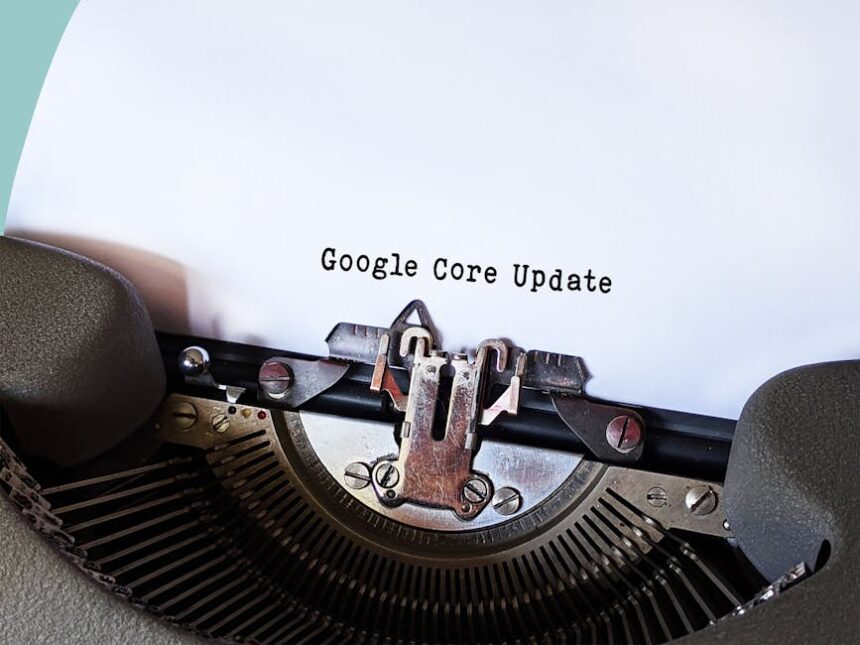Structuring Web Pages for Readability
Optimizing web page structure is paramount for achieving superior readability, a critical factor influencing user experience, engagement, and search engine optimization (SEO). A well-structured page guides the user’s eye, facilitates content comprehension, and ensures accessibility across diverse devices and user capabilities. Beyond mere aesthetics, thoughtful organization is about information architecture, cognitive load management, and the seamless delivery of value to the end-user. The underlying HTML, coupled with CSS for presentation and JavaScript for interactivity, forms the digital scaffold upon which readability is built.
The Foundation of Readability – Semantic HTML and Core Principles
Semantic HTML forms the bedrock of a readable and accessible web page. It involves using HTML elements according to their meaning, rather than solely for their default visual presentation. This intrinsic meaning provides context for browsers, search engines, and assistive technologies, significantly improving how content is parsed and understood. For instance, using
for the main title,
for navigation links,
for self-contained content, and
for tangential content, conveys structure beyond simple division.
The document type declaration, , at the very top of every HTML document, signifies the use of HTML5, ensuring modern browser rendering. Following this, the element acts as the root of the document, and it’s crucial to include the lang attribute (e.g., ). This attribute informs search engines and screen readers of the page’s primary language, enabling appropriate pronunciation and language-specific rendering, which directly impacts readability for users relying on such tools. Within the tag, the section contains metadata not displayed on the page itself but vital for its functionality and discoverability. Key elements here include the tag, which defines the character encoding, preventing display issues with special characters. The viewport meta tag, , is indispensable for responsive design, instructing browsers to scale the page to the device’s width, a fundamental step towards ensuring readability on mobile devices. Without it, mobile browsers might render the page at desktop width, making text unreadably small.
The element encompasses all visible content. Its immediate children often include header (
), navigation (
), main content (), and footer (
) sections, establishing a high-level organizational flow. This logical separation aids users in quickly identifying different content areas. The “above the fold” concept, borrowed from newspaper design, is crucial for initial engagement. Content that appears without scrolling should immediately convey the page’s purpose and value, often including the main headline, a concise summary, and a primary call to action. This initial visible content sets the stage for the rest of the page, influencing whether a user decides to scroll further.
Managing cognitive load is central to readability. Users have limited mental capacity, and an overwhelming amount of information or a cluttered layout can lead to frustration and abandonment. Chunking content, by breaking it down into smaller, digestible units, reduces cognitive strain. This involves using headings, subheadings, paragraphs, lists, and visual breaks effectively. Each “chunk” should ideally convey a single, focused idea or a closely related set of ideas. This systematic approach to content presentation prevents users from feeling overwhelmed by large blocks of text and encourages a more deliberate, less exhaustive reading pattern. Employing clear, concise language also contributes significantly to reducing cognitive load, making content easier to process and understand rapidly. The goal is to make the information effortless to consume, rather than a demanding task.
Mastering Typography for Enhanced Comprehension
Typography is arguably the most direct determinant of text readability. The choice of font, its size, spacing, and color contrast directly impact how easily and comfortably a user can read and absorb content. A well-executed typographic scheme can make a complex article feel approachable, while poor choices can render even simple text arduous.
Font Families: The fundamental decision lies between serif and sans-serif fonts. Serif fonts (e.g., Georgia, Times New Roman) have small decorative strokes (serifs) at the end of their characters. Traditionally used in print, serifs are thought to guide the eye horizontally, aiding readability in long-form text. Sans-serif fonts (e.g., Arial, Helvetica, Open Sans) lack these strokes and often appear cleaner and more modern, particularly on digital screens where screen resolution historically made serifs appear fuzzy. For screen readability, sans-serif fonts are generally preferred for body text due to their clarity at smaller sizes and on lower-resolution displays. However, high-resolution screens have blurred this distinction, and well-designed serif fonts can also be highly readable. The key is consistency and ensuring the chosen font family has good legibility (clarity of individual characters) and readability (ease of reading continuous text).
Font Size: Optimal font size for body text on web pages typically ranges from 16px to 20px for desktop viewing. This range provides a comfortable reading experience without straining the eyes. Headings require larger sizes, creating a visual hierarchy that differentiates them from body text. However, font sizes should be relative (e.g., using em or rem units) rather than absolute (pixels) to allow for user-scalable text and better responsiveness. Headings should scale proportionally to the body text, maintaining their visual prominence. For mobile, font sizes might need slight adjustments to ensure they don’t appear too large or too small on smaller screens, though responsive design often handles this automatically.
Line Height (Leading): Line height, or leading, refers to the vertical spacing between lines of text. Too tight, and lines merge into an unreadable block; too loose, and the text disconnects. An optimal line height is typically 1.5 times the font size for body text (e.g., 16px font size, 24px line height). This provides sufficient whitespace between lines, allowing the eye to track from the end of one line to the beginning of the next without difficulty. For headings, a slightly smaller line height might be appropriate to keep them compact.
Line Length (Measure): The ideal line length for optimal readability is often cited as 45 to 75 characters per line, including spaces. Longer lines force the eye to travel too far, making it hard to find the beginning of the next line, while shorter lines cause frequent line breaks, disrupting the reading rhythm. Achieving this ideal often involves using column layouts or limiting the content width of a text block.
Letter Spacing (Tracking) and Word Spacing: These fine-tuning adjustments control the space between individual letters (tracking) and words. Default values are usually sufficient, but minor adjustments can improve legibility, especially for display fonts or at very large/small sizes. Excessive tracking can make words fall apart, while too little can make them blur together. Similarly, inconsistent word spacing can create “rivers” of white space that distract the eye.
Color Contrast: This is a crucial accessibility and readability factor. The Web Content Accessibility Guidelines (WCAG) recommend specific contrast ratios between text color and background color to ensure text is legible for users with various visual impairments. For normal text, a minimum contrast ratio of 4.5:1 is recommended, and for large text (24px or 19px bold), 3:1. Tools are available to check contrast ratios. Low contrast text is not just a problem for visually impaired users; it causes eye strain for everyone, particularly in prolonged reading sessions or bright environments. Thoughtful selection of background and text colors, avoiding combinations that vibrate or create optical illusions, is essential.
Text Alignment: Left-aligned text (ragged right) is generally considered the most readable for web content. It creates a consistent left edge, making it easy for the eye to track. Justified text, while aesthetically neat with its straight left and right edges, can create uneven word spacing and “rivers” of white space within paragraphs, disrupting flow. Centered text is suitable for short headlines or poetry but quickly becomes unreadable for paragraphs. Right-aligned text is generally reserved for specific design elements or languages that read right-to-left.
Typographic Hierarchy: A strong typographic hierarchy guides the user through the content, indicating what’s most important. This is achieved through variations in font size, weight (boldness), color, and spacing for headings (H1, H2, H3, etc.), subheadings, body text, captions, and other textual elements. H1 should be the largest and most prominent, followed by H2, and so on, creating a clear visual pathway through the page’s structure. This visual differentiation allows users to quickly scan the page and identify sections of interest, improving content discoverability and overall readability.
Readability on Various Devices: With the proliferation of mobile devices, ensuring typography remains readable across different screen sizes is paramount. Responsive typography involves using fluid font sizes (e.g., with CSS vw units or clamp() function), responsive line heights, and adapting line lengths using CSS media queries. This ensures that text scales appropriately, preventing a comfortable reading experience on one device from becoming a frustrating one on another.
Layout and Visual Flow – Guiding the User’s Eye
Beyond individual text elements, the overall layout of a web page significantly influences readability by dictating how the user’s eye moves across the content and how information is presented in relation to surrounding elements. Effective layout strategies minimize cognitive friction, making the consumption of content feel intuitive and effortless.
The Power of Whitespace (Negative Space): Whitespace, or negative space, refers to the empty areas surrounding content elements. Far from being “empty,” whitespace is a powerful design tool that enhances readability by preventing visual clutter and guiding the user’s focus. Adequate whitespace around paragraphs, headings, images, and other components provides visual breathing room, allowing individual elements to stand out. It separates distinct sections, reduces the perceived density of text blocks, and improves scanning efficiency. For instance, generous line height and paragraph spacing make text blocks less intimidating. Margins and padding around elements create clear boundaries, improving the visual hierarchy and making the page less overwhelming.
Grid Systems: Grid systems provide a structured framework for organizing content on a page. They typically consist of a series of intersecting horizontal and vertical lines that define columns and rows, ensuring consistency, alignment, and order. Using a grid system (like CSS Grid or Flexbox-based layouts) helps maintain consistent spacing between elements, aligns content along common axes, and creates a sense of visual harmony. This consistency makes the page predictable and easier to navigate for the user, as their eyes learn to anticipate where content will be placed. A well-implemented grid system inherently improves readability by establishing a clear visual rhythm and preventing haphazard element placement.
Column Layouts: The arrangement of content into columns directly impacts line length and overall text flow.
- Single-Column Layouts: Simple, straightforward, and highly effective for content linearity, especially on mobile devices. They ensure a consistent reading flow from top to bottom, ideal for articles, blogs, and narrative content.
- Multi-Column Layouts: Can be useful for presenting large amounts of diverse information or for mimicking print media. Two-column layouts, for instance, can work well on larger screens to keep line lengths optimal. However, more than two columns for continuous reading text can be challenging for the eye to track, potentially causing users to lose their place. When using multiple columns, clear visual separation and consistent gutters (the space between columns) are essential for readability. Responsiveness is critical: multi-column layouts should typically collapse into a single column on smaller screens.
Visual Hierarchy: This principle involves arranging and styling elements to indicate their relative importance. A strong visual hierarchy helps users quickly grasp the page’s structure and identify key information. It’s achieved through variations in size, color, contrast, whitespace, and position. For example, the main heading (H1) should be the largest and most prominent element on the page, immediately signaling the page’s primary topic. Subheadings (H2, H3) provide further breakdown, smaller in size but still distinct from body text. Call-to-action buttons might use contrasting colors or larger fonts to draw attention. This strategic emphasis guides the user’s eye naturally through the content, making scanning efficient and comprehension faster.
F-Patterns and Z-Patterns: Research into eye-tracking on web pages reveals common scanning patterns that users employ.
- F-Pattern: Prevalent on content-heavy pages (articles, search results). Users typically scan across the top (forming the first “F” bar), then down slightly and scan across a shorter second line (the second “F” bar), and finally, they scan vertically down the left side of the content (the “F” stem). This suggests placing crucial information (headlines, key points, CTAs) in the top and left areas of the content block.
- Z-Pattern: Common for pages that are less text-heavy or have a clear visual flow, like landing pages or product pages. Users scan from the top-left to top-right, then diagonally down to the bottom-left, and finally across to the bottom-right. This pattern suggests placing the primary value proposition at the top-left, a supporting element or call to action at the top-right, another key point at the bottom-left, and the final CTA at the bottom-right.
Designing with these patterns in mind allows designers to strategically place critical information where users are most likely to see it, enhancing discoverability and guiding their journey through the page.
Responsive Design Principles: Responsive design ensures that web pages adapt seamlessly to various screen sizes and orientations, from large desktop monitors to small mobile phones. This adaptability is paramount for readability across devices. Key principles include:
- Fluid Grids: Using relative units (percentages,
em,rem,vw) for widths and spacing, rather than fixed pixel values, so layout elements scale proportionally. - Flexible Images and Media: Images and videos also scale fluidly or adapt using CSS
max-width: 100%orelements to serve appropriately sized assets. - Media Queries: CSS media queries allow for applying different styles based on screen characteristics (width, height, resolution). This enables significant layout changes, such as stacking multi-column layouts into single columns on mobile, adjusting font sizes, or hiding non-essential elements.
Using Borders, Backgrounds, and Dividers Judiciously: These visual elements can enhance readability when used sparingly and thoughtfully. Borders can delineate distinct sections or emphasize specific content blocks (e.g., call-out boxes). Subtle background colors can differentiate sections, but overly busy or high-contrast backgrounds can severely impede text readability. Horizontal rules (
) or simple CSS borders can act as visual dividers, breaking up long sections of text and signaling a thematic shift. Overuse, however, can lead to visual clutter. The goal is to provide subtle cues that aid organization without distracting from the primary content.
Call-to-Action (CTA) Placement and Design for Readability: CTAs are crucial for conversion, and their readability is directly linked to their effectiveness. A CTA button should be visually prominent through contrasting color, sufficient size, and clear, concise text. Its placement should be intuitive, often at the end of a logical content chunk or within the F/Z-pattern flow. The text on the CTA itself must be highly readable (sufficient font size, good contrast) and clearly communicate the action the user is expected to take (e.g., “Learn More,” “Sign Up,” “Download Now”).
Content Organization and Element Usage
The manner in which content is structured and individual HTML elements are employed fundamentally shapes a page’s readability. It dictates how easily users can navigate the information, identify key points, and absorb the intended message. This goes beyond mere visual presentation; it delves into the logical hierarchy and semantic meaning of the content itself.
Heading Structure (H1-H6): The proper use of heading tags (
through
) is critical for both readability and SEO.
- Hierarchical Significance:
- Readability: Headings act as signposts, allowing users to quickly scan the page and understand its content at a glance. They break up large blocks of text, making the page less intimidating and more digestible. Well-crafted headings are concise, descriptive, and accurately reflect the content that follows.
- SEO Benefits: Search engines use headings to understand the structure and topical relevance of a page. Relevant keywords within headings can improve search visibility.
- Accessibility: Screen readers use headings to provide navigation points for visually impaired users, allowing them to jump between sections. A logical heading structure is therefore essential for accessible navigation.
Paragraphs: The fundamental unit of continuous text.
- Length: Keep paragraphs concise, typically 3-5 sentences long, or focusing on a single core idea. Long, unbroken paragraphs are visually daunting and reduce readability, encouraging skimming or abandonment.
- Topic Focus: Each paragraph should ideally explore a single, coherent topic or sub-point. This makes it easier for readers to follow the argument and digest information in manageable chunks.
- Transitional Phrases: Using transition words and phrases (e.g., “however,” “furthermore,” “in addition,” “consequently”) at the beginning of paragraphs or sentences improves flow and logical coherence, guiding the reader smoothly from one idea to the next.
- Visual Separation: Ample line height and paragraph spacing are crucial for distinguishing paragraphs and providing visual breaks.
Lists (Unordered, Ordered, Description Lists): Lists are incredibly effective for presenting information clearly and concisely, improving scannability and comprehension.
- Unordered Lists (
- Ordered Lists (
- Description Lists (
Regardless of type, list items should be consistent in their phrasing and structure.
Tables: Used for presenting tabular data (rows and columns of data), not for layout purposes.
- Clarity: Tables organize complex data into a readable format, allowing users to compare and contrast information efficiently.
- Semantic Markup: Use
,
,,(table header), and (table data) for proper semantic structure. - Responsiveness: Tables can be challenging to make responsive on small screens. Strategies include using
overflow: autoto allow horizontal scrolling, transforming tables into stacked cards, or selectively hiding less important columns on mobile. Ensure that content within table cells remains readable (appropriate font size, padding).Blockquotes and Pull Quotes:
- Blockquotes (
- Pull Quotes: Often designed as visually striking excerpts from the main text, usually placed outside the main text flow (e.g., floating to the side) or highlighted within it. Their purpose is to draw attention to key statements, provide a quick summary, and break up the visual monotony of long articles, enticing readers to delve deeper.
Highlighting and Emphasis:
- Bold (
or): Use sparingly to draw attention to key terms or phrases. Overuse diminishes its impact and makes the text visually noisy.carries semantic weight, indicating importance, whileis purely presentational. - Italics (
or): Used for emphasis, titles of works, foreign words, or specific terminology.indicates emphasized text, whileis for text that is offset from the normal prose (e.g., technical terms, thoughts). - Underlines: Avoid using underlines for emphasis on the web, as they are universally associated with hyperlinks. This can confuse users and negatively impact usability.
Accordions and Tabs: These UI elements are invaluable for managing large amounts of content within a limited space, especially on informational pages or FAQs.
- Accordions: Stacked elements where clicking a title expands to reveal content and collapses when another is clicked. Good for presenting distinct but related content sections, reducing initial cognitive load.
- Tabs: Organize content into multiple panes, with only one pane visible at a time. Ideal for presenting different facets of the same topic (e.g., product specifications, reviews, accessories).
While these conserve space, ensure their use is intuitive. Users must understand that there is more content hidden and how to access it. Clear labels, prominent clickable areas, and visual cues (e.g., arrows, active states) are essential for their readability and usability.
Internal Linking Strategies: Internal links are hyperlinks that point to other pages within the same website.
- Contextual Links: Embedding links naturally within the body of the text, often using relevant keywords as anchor text. This provides readers with immediate access to related information or deeper dives, enhancing their understanding and guiding them through the site.
- Related Content Sections: Dedicated sections at the end of articles (e.g., "Related Posts," "You Might Also Like") or in sidebars. These offer users additional avenues for exploration, reducing bounce rates and improving engagement.
- Breadcrumbs: Navigation aids that show the user's current location within a website's hierarchy (e.g., Home > Category > Subcategory > Current Page). They improve readability by providing clear contextual navigation, especially on complex sites.
Effective internal linking not only improves SEO by distributing link equity but also enhances readability by allowing users to control their information flow, delving deeper into topics of interest at their own pace. The anchor text for internal links should be descriptive, giving users a clear idea of where the link will take them.
Visual Elements and Multimedia for Engagement
Integrating visual elements and multimedia into web pages is not merely an aesthetic choice; it’s a strategic decision that profoundly impacts readability and user engagement. Thoughtfully placed images, videos, and infographics can break up dense text, illustrate complex concepts, and appeal to diverse learning styles, ultimately enhancing comprehension and retention.
Images: Images are powerful tools for communication and visual appeal.
- Purpose: Every image should serve a clear purpose: to illustrate a point, break up text, convey emotion, or add visual interest. Avoid using purely decorative images that distract or add no value.
- Alt Text: The
altattribute on an - Compression: Image file size directly impacts page load speed, which in turn affects user patience and, indirectly, readability. Optimize images for the web by compressing them without significantly sacrificing quality. Tools and techniques like responsive images (using
srcsetandelements) serve appropriately sized images based on the user's device and viewport, further reducing load times. - Responsive Images: Using
max-width: 100%in CSS ensures images scale down to fit their container on smaller screens, preventing horizontal scrolling issues and maintaining readability. - Captions: Adding captions (
Infographics and Charts: When presenting complex data, statistics, or processes, infographics and charts are far more effective than dense paragraphs of text.
- Visual Data Presentation: They distill intricate information into visually digestible formats, making it easier for users to identify trends, compare data points, and grasp complex relationships at a glance.
- Engagement: Well-designed infographics are highly shareable and engaging, attracting attention and encouraging deeper interaction with the content.
- Readability Enhancement: They provide a welcome visual break from continuous text, preventing information overload and improving the overall flow of the page. Ensure charts are clearly labeled, have appropriate legends, and maintain good color contrast for accessibility.
Videos: Videos offer a dynamic way to convey information, demonstrate processes, or tell stories.
- Embedding: Use embedding services (e.g., YouTube, Vimeo) for efficient delivery. Ensure videos are responsive and scale correctly on different devices.
- Auto-Play Considerations: Avoid auto-playing videos, especially with sound, as this can be disruptive and frustrating for users, negatively impacting their experience and willingness to stay on the page. Allow users to control playback.
- Transcripts and Captions: For accessibility, always provide video transcripts and closed captions. This allows users with hearing impairments to access the content and also benefits those who prefer to read or are in environments where audio is not feasible. Transcripts also provide valuable text content for SEO.
- Purposeful Use: Videos should be used when they genuinely enhance understanding, such as demonstrations, interviews, or complex explanations. They should complement, not replace, core textual content.
Icons: Icons are small, symbolic images that represent actions, concepts, or categories.
- Universality: Well-designed, universally recognized icons (e.g., a magnifying glass for search, a house for home) reduce cognitive load by providing immediate visual cues, making navigation and interaction more intuitive.
- Complementing Text: Icons should typically be paired with text labels to ensure clarity, especially for less common symbols. Relying solely on icons can be ambiguous and reduce readability for some users.
- Visual Appeal: They add a touch of visual polish and can break up monotonous text. Using SVG icons or icon fonts ensures scalability without loss of quality.
The Role of Color beyond Typography: Color schemes play a significant role in branding, mood, and visual hierarchy.
- Branding and Emotional Impact: Colors evoke emotions and reinforce brand identity. A consistent color palette across a website contributes to a professional and cohesive user experience, which indirectly supports readability by fostering trust and familiarity.
- Highlighting and Segmentation: Beyond text, colors can be used as background for specific sections, for buttons, or as accent colors to draw attention to important elements (e.g., a "New" badge, an alert message). They can segment the page visually, helping users differentiate between content types or sections. However, always consider color blindness and ensure sufficient contrast for all elements, not just text.
Animations and Transitions: Subtle animations and transitions can enhance the user experience by providing visual feedback, guiding attention, or making interactions feel more fluid.
- Subtle Enhancements: Examples include hover effects on links, smooth scrolling, or subtle fades when content loads. These can make a page feel more interactive and engaging.
- Distractions: Overuse of flashy, obtrusive, or long animations can be highly distracting, slow down the page, and detract significantly from readability. Animations should be purposeful and contribute to usability, not detract from it. Avoid anything that auto-plays aggressively or takes too long to complete, especially if it blocks access to content.
Advanced Considerations and Accessibility
Readability extends far beyond superficial design; it encompasses the fundamental principles of accessibility, performance, and user-centric design that ensure a positive experience for every user, regardless of their circumstances or abilities. Addressing these advanced considerations elevates a web page from merely being "readable" to being truly usable and inclusive.
Accessibility as a Core Readability Principle: Accessibility is not an add-on; it's an inherent component of high-quality web design and directly impacts readability for a vast spectrum of users. Adhering to standards like the Web Content Accessibility Guidelines (WCAG) ensures that content is perceivable, operable, understandable, and robust.
- WCAG Compliance: Meeting WCAG guidelines (e.g., sufficient color contrast, keyboard navigability, alternative text for non-text content, proper form labeling) directly improves readability for users with visual impairments, motor disabilities, cognitive disabilities, and more.
- ARIA Roles: Accessible Rich Internet Applications (ARIA) attributes provide semantic meaning to dynamic content, widgets, and elements that HTML lacks native support for (e.g., custom tab interfaces, carousels). ARIA roles, states, and properties communicate information to assistive technologies, making interactive elements understandable and operable, thus extending readability beyond static text.
- Keyboard Navigation: Many users, including those with motor impairments or temporary injuries, rely solely on keyboard navigation (using Tab, Shift+Tab, Enter, Spacebar). Ensuring all interactive elements are reachable and operable via keyboard, with clear focus indicators, is paramount. A page that cannot be navigated by keyboard is fundamentally unreadable for these users.
Screen Reader Optimization: Screen readers are software applications that interpret website content and render it as speech or braille output. Optimizing pages for screen readers significantly enhances readability for visually impaired users.
- Semantic Structure: As previously discussed, proper semantic HTML (
,,) is the most crucial factor. Screen readers use this structure to provide navigation and context.
- Meaningful Link Text: Link text should be descriptive and make sense out of context (e.g., "Read more about accessibility guidelines" instead of "Click here"). This allows screen reader users to quickly understand the purpose of a link.
- Form Labels: Every form input field should have a properly associated
element. This ensures screen readers can announce the purpose of the input field.- Image Alt Text: As noted, crucial for image understanding.
User Testing and Feedback: The most effective way to gauge and improve readability is through user testing.
- Qualitative Testing: Observing real users interacting with your web page can reveal unexpected pain points, areas of confusion, or elements that are hard to read or navigate. Ask users to perform specific tasks and articulate their thought process.
- Quantitative Data: Heatmaps, scroll maps, Google Analytics (bounce rate, time on page, exit rate) can provide data insights into how users interact with content, indirectly highlighting readability issues. High bounce rates on content-heavy pages, for instance, could indicate readability problems.
- Iterative Improvement: Readability is not a one-time fix but an ongoing process. Use feedback and data to make informed adjustments, test again, and refine.
Personalization and Customization: Offering users options to customize their reading experience directly enhances readability.
- Font Size Toggles: Providing buttons or controls that allow users to increase or decrease the text size (e.g., 1x, 1.25x, 1.5x) caters to individual preferences and varying visual acuity. This is particularly beneficial for older users or those with mild visual impairments.
- Dark Mode/Light Mode: Allowing users to switch between a light background with dark text (traditional) and a dark background with light text (dark mode) can significantly improve comfort and reduce eye strain, especially in low-light environments.
- Contrast Options: Offering high-contrast modes can be vital for users with certain visual impairments.
Performance and Load Speed: While not directly about text presentation, page load speed profoundly impacts user patience and their willingness to engage with content. A slow-loading page is inherently unreadable because users will abandon it before they even see the content.
- Image Optimization: Compress images, use modern formats (WebP), and implement lazy loading.
- Minify CSS and JavaScript: Reduce file sizes by removing unnecessary characters.
- Browser Caching: Leverage caching to speed up return visits.
- Content Delivery Networks (CDNs): Deliver content faster by serving it from geographically closer servers.
Fast loading times contribute to a seamless user experience, allowing users to access and read content without frustrating delays.
Microinteractions and Feedback: Subtle animations, sounds, and visual cues (microinteractions) provide immediate feedback to users, enhancing usability and creating a more engaging experience.
- Hover Effects: When a user hovers over a link or button, a subtle color change, underline, or slight enlargement confirms its interactivity.
- Form Validation: Real-time feedback for form inputs (e.g., a green checkmark for valid entry, a red outline for an error) guides users and prevents frustration, making form filling a more readable process.
- Loading Indicators: Spinners or progress bars inform users that content is loading, preventing them from wondering if the page has frozen.
These small details contribute to an intuitive interface where users feel in control and understand the system's responses, indirectly improving their ability to read and interact with the page effectively.
The Future of Readability: As technology evolves, so too will approaches to readability.
- AI-driven Content Adaptation: AI could potentially personalize content presentation (e.g., rephrase complex sentences, adjust reading level, recommend optimal layout) based on an individual user's cognitive profile, reading speed, or historical preferences.
- Personalized Layouts: Beyond simple dark mode, future interfaces might dynamically adjust column counts, line lengths, or even content order based on user data and machine learning.
- Voice Interfaces and Multi-modal Experiences: The rise of voice assistants means content needs to be structured not just for visual readability but also for audibility and conversational flow. This will emphasize semantic structure even further.
Measuring Readability: While subjective, tools attempt to quantify text readability.
- Readability Scores: Algorithms like Flesch-Kincaid Reading Ease, Gunning Fog Index, or SMOG Index estimate the grade level required to understand a text. They typically analyze sentence length and word complexity.
- Limitations: These scores are based on English text and have limitations. They don't account for layout, typography, user context, or the effectiveness of visual aids. They are a starting point for analysis, not a definitive judgment of user experience.
Ultimately, the most important metric for readability is whether real users can easily and comfortably understand the content and achieve their goals on the page.
Maintaining Consistency Across a Website: Consistency in design and structure across an entire website is paramount for sustained readability and usability. When users navigate from one page to another, they expect a consistent experience:
- Consistent Navigation: Main navigation menus, sidebars, and footers should appear in predictable locations and maintain the same structure.
- Typographic Harmony: Use a consistent set of fonts, sizes, and line heights for headings, body text, and other elements across all pages.
- Layout Patterns: Establish repeatable layout patterns for common content types (e.g., article pages, product listings, contact forms).
- Color Palette and Branding: Adhere to a defined brand style guide for colors, imagery, and interactive elements.
Inconsistency forces users to reorient themselves on every new page, increasing cognitive load and hindering their ability to quickly find and absorb information. Consistency fosters familiarity, reduces friction, and allows users to focus on the content rather than figuring out the interface, thus promoting a seamless and highly readable experience across the entire digital ecosystem.
- Responsiveness: Tables can be challenging to make responsive on small screens. Strategies include using











